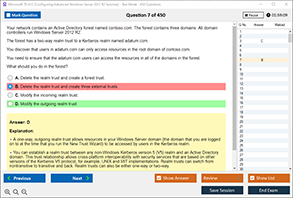Cryptocurrency has revolutionized the financial landscape, offering decentralized and secure alternatives to traditional financial systems. One key element of cryptocurrency is the technology behind it—blockchain. Understanding blockchain and its role in recording transactions is essential for anyone interested in the world of digital currencies.
In this article, we’ll explore the names given to the databases where all cryptocurrency transactions are recorded, focusing on the different types of databases and their functionality in the crypto world. By the end, you'll have a clear understanding of the importance of these databases and how they ensure transparency, security, and immutability of cryptocurrency transactions.
Introduction to Cryptocurrency and Blockchain
Cryptocurrency transactions need to be stored securely, transparently, and immutably. Unlike traditional financial systems that use centralized databases, cryptocurrencies rely on decentralized databases to record every transaction. These decentralized databases are powered by blockchain technology, which forms the foundation of most digital currencies such as Bitcoin, Ethereum, and many others.
Blockchain technology ensures that once a transaction is recorded, it cannot be altered, ensuring the integrity of the data. But what names are given to the databases where these transactions are recorded? Let’s dive into this question.
Blockchain – The Backbone of Cryptocurrency Databases
The primary name for the database where cryptocurrency transactions are recorded is the blockchain. A blockchain is a distributed ledger that contains a sequence of records, known as blocks, which are linked together in chronological order. Each block contains a list of transactions and a cryptographic hash of the previous block, making it virtually impossible to alter the information.
When a new cryptocurrency transaction occurs, it is validated by network participants (miners or validators, depending on the consensus mechanism used). Once validated, the transaction is added to a new block, which is then added to the existing chain of blocks. This process makes the blockchain a public and transparent database that is accessible by anyone but is immutable and secure due to its decentralized nature.
Types of Blockchains
While the term "blockchain" is the most common name for a cryptocurrency transaction database, it’s important to note that different types of blockchains exist. These variations primarily depend on the consensus mechanism and the intended use of the blockchain. The main types include:
Public Blockchains
Public blockchains are decentralized and open to anyone who wants to participate. They are permissionless, meaning anyone can join the network, validate transactions, and even mine new blocks. Examples of public blockchains include Bitcoin and Ethereum. These blockchains are the primary databases used for recording cryptocurrency transactions.
Private Blockchains
Private blockchains are centralized, meaning they are controlled by a single entity or a consortium of entities. Access to the network is restricted, and only authorized participants can validate transactions and add new blocks. These blockchains are often used by businesses for internal purposes, such as supply chain management or secure record-keeping, but are not commonly used for cryptocurrency transactions.
Consortium Blockchains
Consortium blockchains fall between public and private blockchains. They are partially decentralized, with a group of trusted organizations or entities controlling the network. This type of blockchain is often used for collaborative projects where multiple organizations need to share a decentralized database but want to retain control over the validation process.
Why Are Blockchains Used to Record Cryptocurrency Transactions?
Blockchains are used to record cryptocurrency transactions for several reasons:
- Security: Blockchain transactions are secured through encryption and cryptographic hashing, making it nearly impossible to alter or manipulate the data.
- Transparency: All transactions on a blockchain are publicly recorded and accessible by anyone, ensuring complete transparency.
- Immutability: Once a transaction is added to the blockchain, it cannot be altered or deleted, ensuring the integrity of the transaction history.
- Decentralization: Blockchains are decentralized networks, meaning they are not controlled by any single entity, reducing the risk of centralized control and manipulation.
Ledger Types and Terms in Cryptocurrency
While the most common term for the database recording cryptocurrency transactions is "blockchain," there are other related terms and concepts that also describe the process of transaction recording. These include:
Distributed Ledger Technology (DLT)
Distributed Ledger Technology (DLT) refers to a system where the ledger (or database) is maintained across multiple locations, ensuring that every participant has a copy of the data. Blockchain is a type of DLT, but not all DLTs use blocks and chains. DLT systems can be more generalized, and some may not be based on blockchain.
Cryptocurrency Ledger
A cryptocurrency ledger is essentially a record of all the cryptocurrency transactions that have ever been made. This ledger is maintained by the blockchain, and each transaction is recorded in a way that makes it nearly impossible to alter, ensuring a clear history of all transfers.
How Does the Blockchain Ensure Data Integrity?
The integrity of cryptocurrency transaction data is maintained through a combination of cryptographic techniques and consensus mechanisms. Here’s how it works:
- Hash Functions: Each block in the blockchain contains a hash of the previous block, which connects the blocks in a chain. If any data in a block is altered, the hash will change, making it obvious that the data has been tampered with.
- Consensus Mechanisms: Consensus mechanisms like Proof of Work (PoW) and Proof of Stake (PoS) ensure that transactions are validated and agreed upon by the network before being added to the blockchain. This prevents fraudulent transactions and ensures that the ledger remains accurate.
Real-World Use Cases of Blockchain Databases
Blockchain technology has a wide range of applications, from cryptocurrencies to supply chain tracking. Some notable use cases include:
- Cryptocurrency Transactions: As mentioned earlier, cryptocurrencies like Bitcoin and Ethereum use blockchain to record and secure transactions.
- Smart Contracts: Blockchain can be used to automate and secure smart contracts—self-executing contracts with the terms of the agreement directly written into lines of code.
- Supply Chain Management: Companies use blockchain to track products from production to delivery, ensuring transparency and preventing fraud.
- Voting Systems: Blockchain technology is also being explored for secure, transparent, and tamper-proof voting systems.
Challenges and Future of Blockchain Databases
While blockchain databases offer significant advantages in terms of security and transparency, they are not without their challenges. Some of the key challenges include:
- Scalability: As blockchain networks grow, so does the volume of transactions. This can cause congestion and slow transaction processing times.
- Energy Consumption: Some consensus mechanisms, like Proof of Work, require significant computational power and energy consumption, raising concerns about their environmental impact.
- Regulatory Concerns: The decentralized nature of blockchain presents challenges for governments and regulatory bodies seeking to control or monitor cryptocurrency transactions.
Despite these challenges, blockchain continues to evolve, with new technologies and solutions being developed to address scalability, energy efficiency, and regulatory concerns.
Conclusion
In conclusion, the database where all cryptocurrency transactions are recorded is most commonly referred to as a blockchain. Blockchain, as a form of distributed ledger technology, ensures that cryptocurrency transactions are transparent, secure, and immutable. By understanding the different types of blockchains and their associated terms, you can gain a deeper insight into how cryptocurrencies work and why blockchain is considered the backbone of digital currency.
Sample Questions & Answers
- What is the main purpose of blockchain technology in cryptocurrency?
- A) To store cryptocurrency transactions in a centralized database
- B) To securely record cryptocurrency transactions in a decentralized and immutable ledger
- C) To enable faster transactions without validation
- D) To regulate cryptocurrency transactions globally
Answer: B) To securely record cryptocurrency transactions in a decentralized and immutable ledger
- Which of the following is a key feature of a public blockchain?
- A) Restricted access to transaction records
- B) Transactions are private and untraceable
- C) Anyone can participate in validating transactions
- D) Only authorized entities can validate transactions
Answer: C) Anyone can participate in validating transactions
- What is Distributed Ledger Technology (DLT)?
- A) A centralized database for cryptocurrency
- B) A system where multiple copies of a ledger are stored across multiple locations
- C) A type of blockchain that uses proof of work
- D) A secure way to store cryptocurrency in wallets
Answer: B) A system where multiple copies of a ledger are stored across multiple locations



